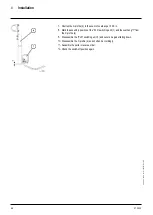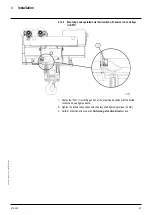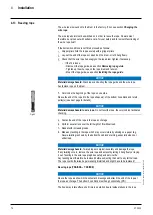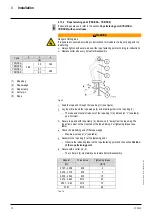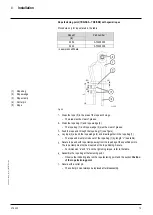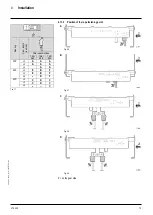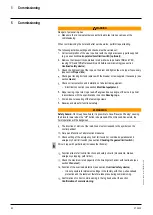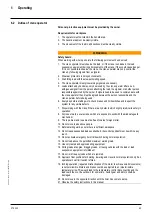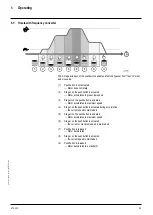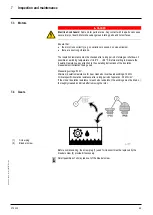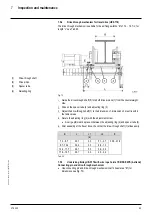
5
Commissioning
80
07.2020
ba
-o
.2
.6
.0
-us
-3
.2
-ys
|
A1
18
67
50
1 Re
v A
E
5
Commissioning
WARNING
Danger of personal injuries
➢
Make sure that a competent person authorized to test cranes carries out the
commissioning.
When commissioning the hoist and after service works, perform repeat testing.
The following activities, settings and checks must be carried out:
Correct completion of the wire rope hoist with the original accessory parts supplied
(e.g. see section
Hook operated hoist limit switch (optional)
).
Remove the transport locks marked in red with wire rope hoists YKB and YKC,
reeving 1PS and 1PD after assembly and before commissioning (see section
Overload safety device
).
Check the tight seating of the rope on the drum and tighten the wire rope if necessary
(see section
Rope drive
).
Check gear locking bolt and replace with the bleeder screw supplied if necessary (see
section
Gears
).
Check correct selection and installation of all electrical equipment.
–
Electrical connection (see section
Electrical equipment
).
Rope reeving, rope twist, rope lead-off angle and set-up angle of the wire rope hoist
in accordance with the specifications in section
Reeving rope
.
Firm and secure seating of the fastening screws.
Runway end stops for functional safety.
WARNING
Safety hazard.
On three phase hoists, it is possible to have “Reverse Phasing” causing
the block to lower when the “UP” button is depressed. When this condition exists, the
hoist operation will be dangerous.
The direction of motion of the load hook must correspond to the symbols on the
control pendant.
Set-up and function of all protection measures.
Check setting of the emergency hoist limit switch or combined operational and
emergency hoist limit switch (see section
Checking the geared limit switch
).
Drive in rope with partial load (increases the lifetime).
Functional test of all control functions and safety circuits (movements, brakes,
emergency stopping, path limiter).
Check the maximum rated capacity of the hoisting mechanism with test loads (see
section
Crane test
).
Function of the overload protection (see section
Overload safety device
).
–
It is not possible to implement settings in the factory with the on-site overload
protection and the test must therefore take place during commissioning.
Confirmation of correct commissioning in the log book under the section
Confirmation of commissioning
.

